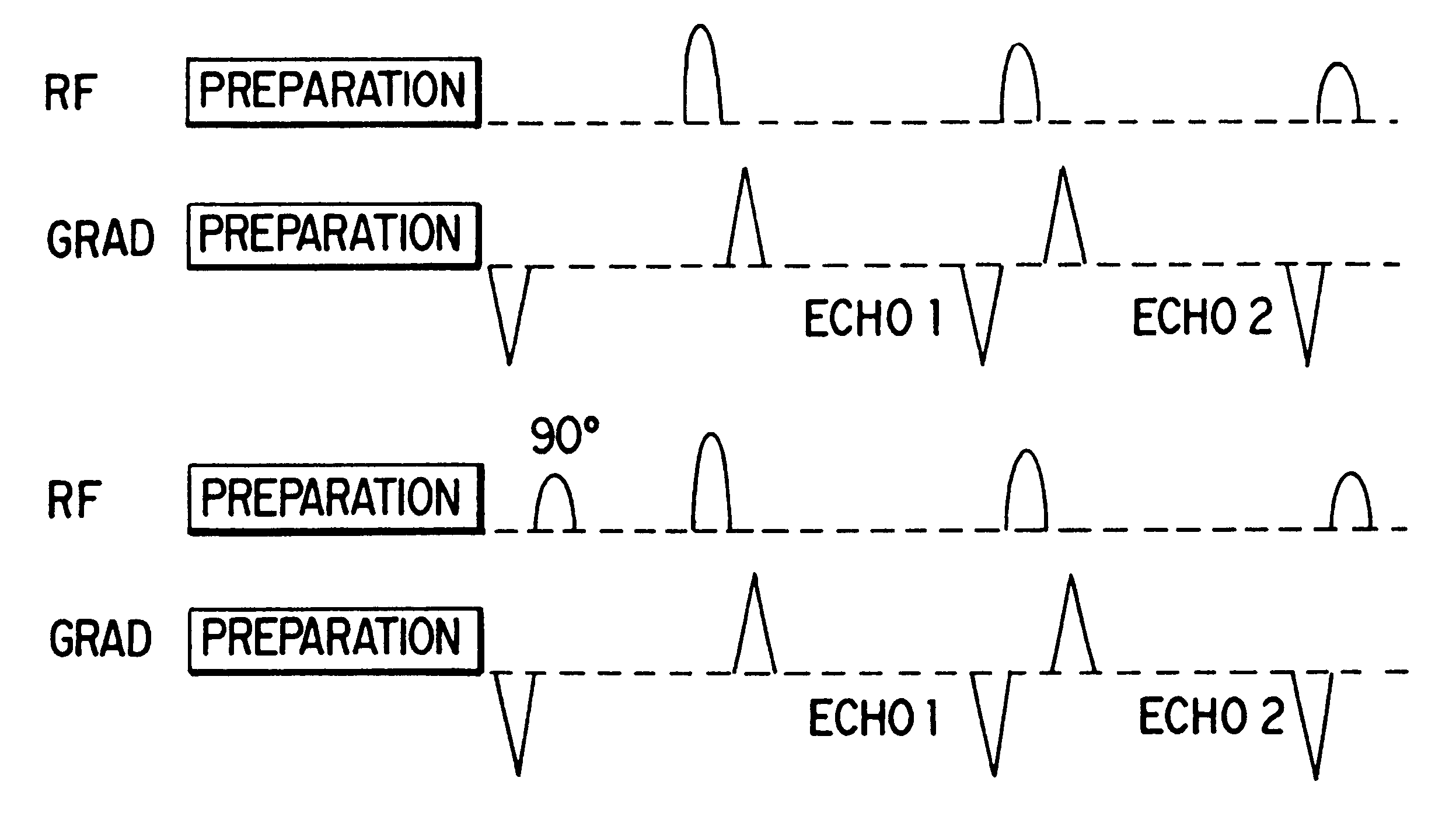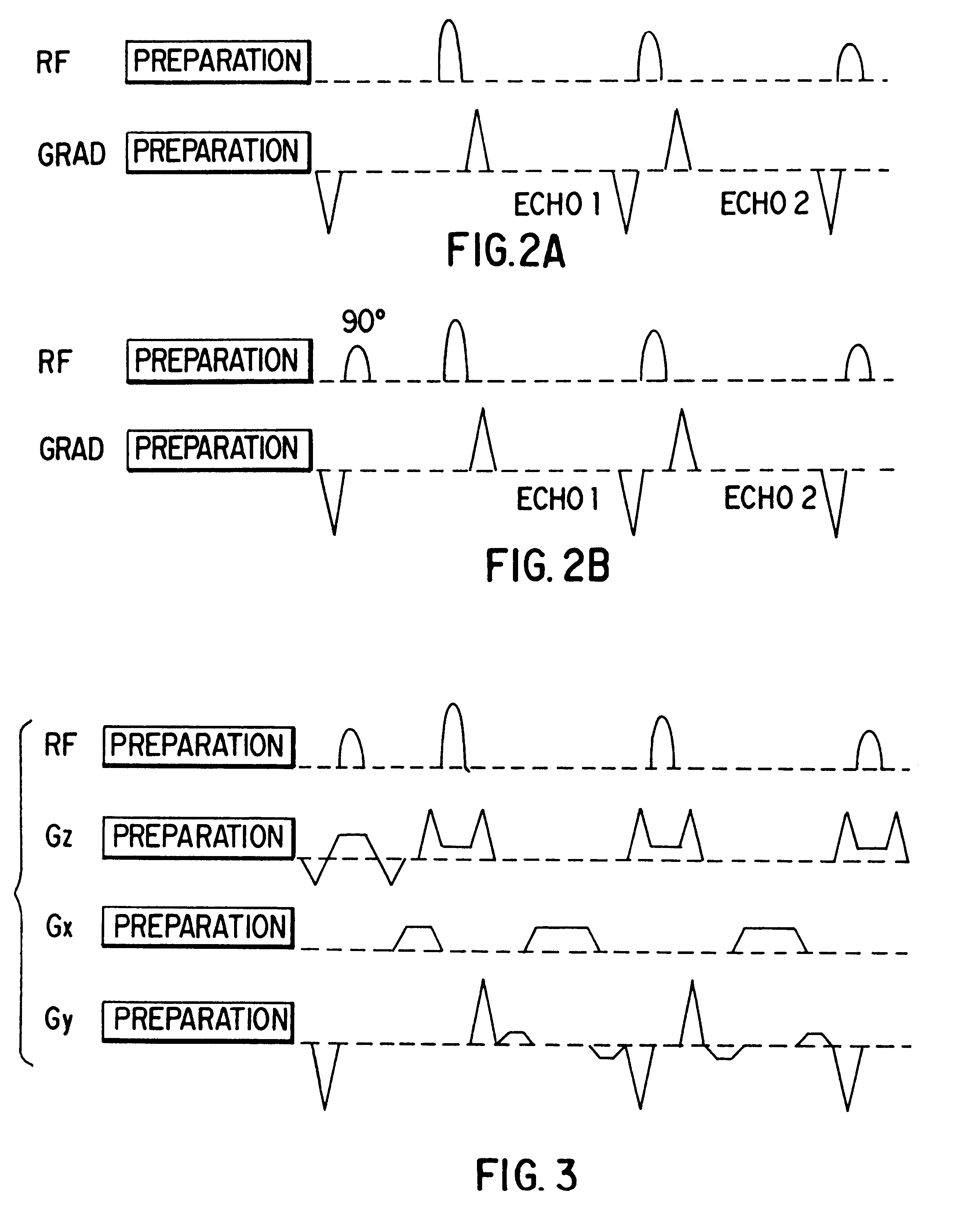Phase insensitive preparation of single-shot rare for diffusion imaging
a technology of diffusion imaging and phase insensitive preparation, which is applied in the direction of reradiation, measurement using nmr, instruments, etc., can solve the problems of signal loss and blurring in images, severe degraded images, and rapid attenuation
- Summary
- Abstract
- Description
- Claims
- Application Information
AI Technical Summary
Problems solved by technology
Method used
Image
Examples
Embodiment Construction
A preferred embodiment of the invention will now be described in detail with reference to FIGS. 1-6. Those skilled in the art will appreciate that the description given herein with respect to those figures is for exemplary purposes only and is not intended in any way to limit the scope of the invention. All questions regarding the scope of the invention may be resolved by referring to the appended claims.
Theory
The importance of the phase of the excited magnetization relative to the phase of the refocusing pulses in determining the amplitude of the observed echoes in a multiple spin echo sequence (MSES) has long been known. If the refocusing flip angle is not exactly 180.degree., the component of the magnetization along the Meiboom-Gill (MG) phase will be remarkably well refocused while the component orthogonal to this phase will be modulated and attenuated. This property has recently been related to the existence of a temporary steady state solution to the Bloch equations in the abs...
PUM
 Login to View More
Login to View More Abstract
Description
Claims
Application Information
 Login to View More
Login to View More - R&D
- Intellectual Property
- Life Sciences
- Materials
- Tech Scout
- Unparalleled Data Quality
- Higher Quality Content
- 60% Fewer Hallucinations
Browse by: Latest US Patents, China's latest patents, Technical Efficacy Thesaurus, Application Domain, Technology Topic, Popular Technical Reports.
© 2025 PatSnap. All rights reserved.Legal|Privacy policy|Modern Slavery Act Transparency Statement|Sitemap|About US| Contact US: help@patsnap.com



